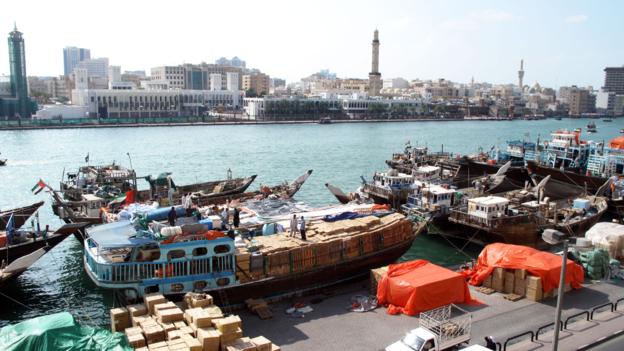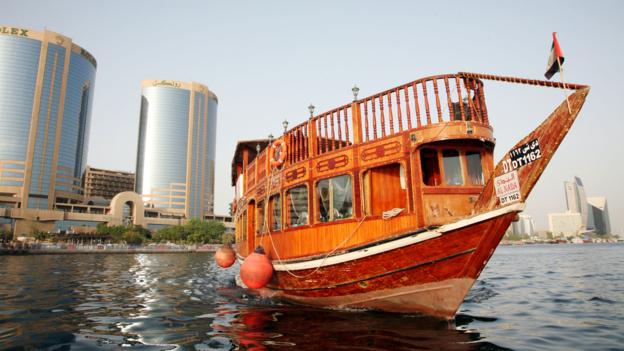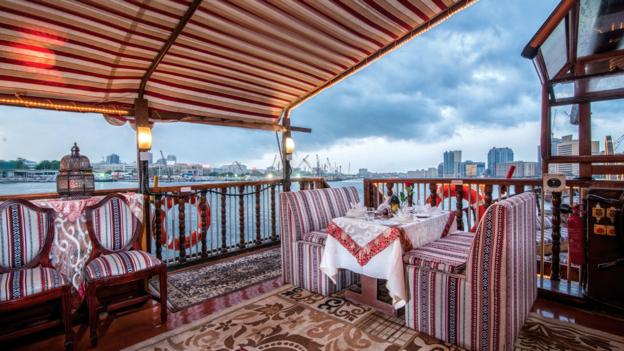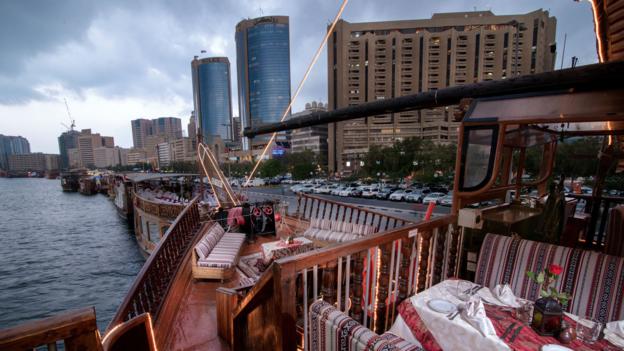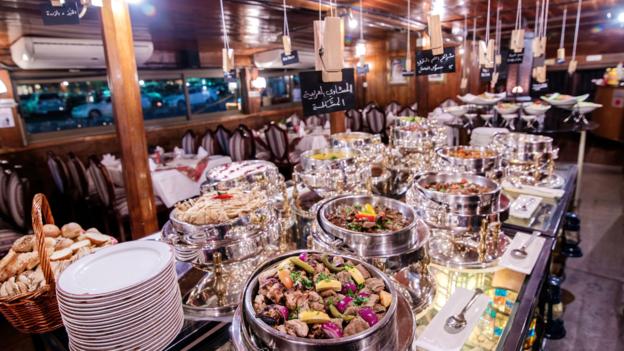A trip back in time to old Dubai
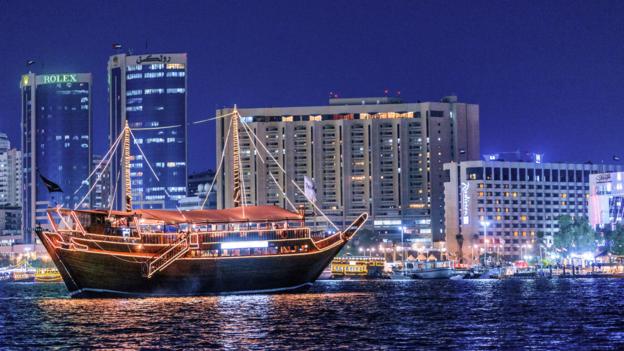
Supercars may be Dubai’s current transport of choice – but a spice-scented dhow trip will take you worlds away from the modern Emirate’s shiny skyscrapers.
It was early evening in Dubai and the sky was streaked rose and peach as the sun dipped towards the horizon. At the edge of the salt-water creek that splits the city in two, the water glowed with reflected light, and the scent of cinnamon, cloves and frankincense drifted across from the spice souk.
I was in Bur Dubai, the emirate’s original trading hub and its commercial heart until little more than 100 years ago. Today, it may not have the flash of new Dubai further inland, but it remains a busy site of Middle Eastern trade, packed with vibrant souks and bustling jetties.
The Arabian Peninsula has a rich maritime history. Wooden boats, or dhows, have been used in the region for centuries, and were key in developing thriving fishing, pearl diving and trade industries. Dhows were a way of life for the coastal tribes of Dubai, who strode the sandy shores long before the five-star beach bars arrived. Today, the Emiratis may deal more in stocks than fish – but this traditional mode of transport still plies a handsome trade on the main waterway of Dubai Creek.
Before me, a busy scene unfolded: docking stations on either side of the creek were lined with huge, multi-coloured cargo dhows, packed with crates bringing merchandise from Iran and beyond. Meanwhile, commuters crossed the waterway on abras: short, nippy wooden dhows with open sides and simple roofs that act as water taxis.
Amid all this action floated the sailing dhows, the glamorous vessels that most people associate with old Arabia. Nowadays, these vessels, with their slender hulls, shallow bodies and soaring masts, are usually motorised and used for tours. But thanks to traditional local craftsmanship, they retain the gravitas and elegance of old, particularly when viewed alongside their humbler cousins: the abra and the cargo dhow.
I was after a more authentically Arabian boating experience.
Although there’s a slew of organised dhow tours available across Dubai – including lunch, dinner, moonlight and sightseeing cruises – I was after a more authentically Arabian boating experience. Just before sunset, I headed to rickety Bur Dubai Abra Station, next to the souks along the creek’s banks, where jewellers, pastry vendors, tailors and spice sellers were gearing up for the hustle and bustle of evening trade – a lucrative period in a country where daytime temperatures can reach 50C. This is the perfect time to make the cross-creek abra journey to the famous gold and spice souks in the Deira neighbourhood on the opposite bank.
At the dockside, a series of wooden ramps led down to floating jetties. The bustling area was filled with passengers pushing their way through the muggy, spice-scented air to secure a seat on the next abra, while men hurried past pushing carts piled with cloth and silks en route to the nearby textile souk.
In centuries past, this waterway would have been full of dhows from across the region, bringing jewels, exotic foodstuffs and handicrafts from Persia, China and India. Today, the jetties were busy with commuting traders, kohl-eyed ladies in full burkas, Emirati men in pristine white dishdashas (the ankle-length white garment worn by local men across the region), sharp-suited businessmen and wide-eyed tourists, all cheerfully vying for space on the wooden benches.
This trip is a bargain in a city that tends not to believe in such things.
At a cost of one dirham, this trip is a bargain in a city that tends not to believe in such things. Pushed forward by the waiting crowd, I hopped from the jetty onto the next boat that pulled up, and took a seat on the broad, central bench. Moments later I was joined by a young local family, the mother loudly chastising her two sons in Arabic for playing around.
As the boatman called for everyone to pass their money to him down the line of seated passengers, the creaking boat set off, making its way slowly upstream towards the souks. It was an aural journey as much as a physical one, with a soundtrack of gently lapping water, snatches of laughter from passing boats and the thrumming of the tiny engine accompanied by the haunting Muslim call to prayer that echoed over the water. Crossing at this time of day was magical: as the sun dropped and the skies deepened to orange, Bur Dubai’s traditional wind towers and minarets were thrown into sharp relief on the skyline. The fragrance of exotic spices grew stronger as the abra drew closer to the opposite shore.
Up ahead, the creek’s meandering curves were lined with buildings that steadily increased in size, from the soft, low domes of the Grand Mosque, past the consular district to the distinctive ridged towers of the Radisson Blu Hotel and onto the sparkling inland skyscrapers, including the pyramid-shaped Wafi Mall; the vibrant Downtown district, with its numerous hotels, shops and restaurants; and the world’s tallest building, the Burj Khalifa.
As the sun sank and the skies darkened, hundreds of tiny lights covering the Al Mansour Dhow – one of Dubai’s oldest dhows that has been turned into an iconic travelling restaurant – flickered on, and the elegant old ship lit up on the water, allowing us to admire the statuesque vessel in full evening attire. There was lull in the conversation on our little boat, as all eyes turned to the brightly lit dhow proudly setting out on its evening excursion. The local woman next to me hugged her little sons close as they watched with round eyes. The passengers on that grand boat might be heading out for an evening dinner cruise, but we were the ones who got to watch it happen.
The last vestiges of vermillion dissolved in the night sky and warm darkness enveloped us like a shawl. Night had settled on Dubai Creek.
Too soon, the abra pulled up at the Deira Souks Abra Station, depositing passengers to explore the intoxicating avenues of the spice market or barter their way through the glittering stalls of the gold souk. The water taxi trip lasted just a few minutes, but had taken us worlds away from the shiny buildings and flash cars of the modern Emirate. For that brief trip, travelling across the waters that were once the highway connecting Dubai to the east, I felt like I had stepped back in time.
Политика конфиденциальности | Правила пользования сайтом
